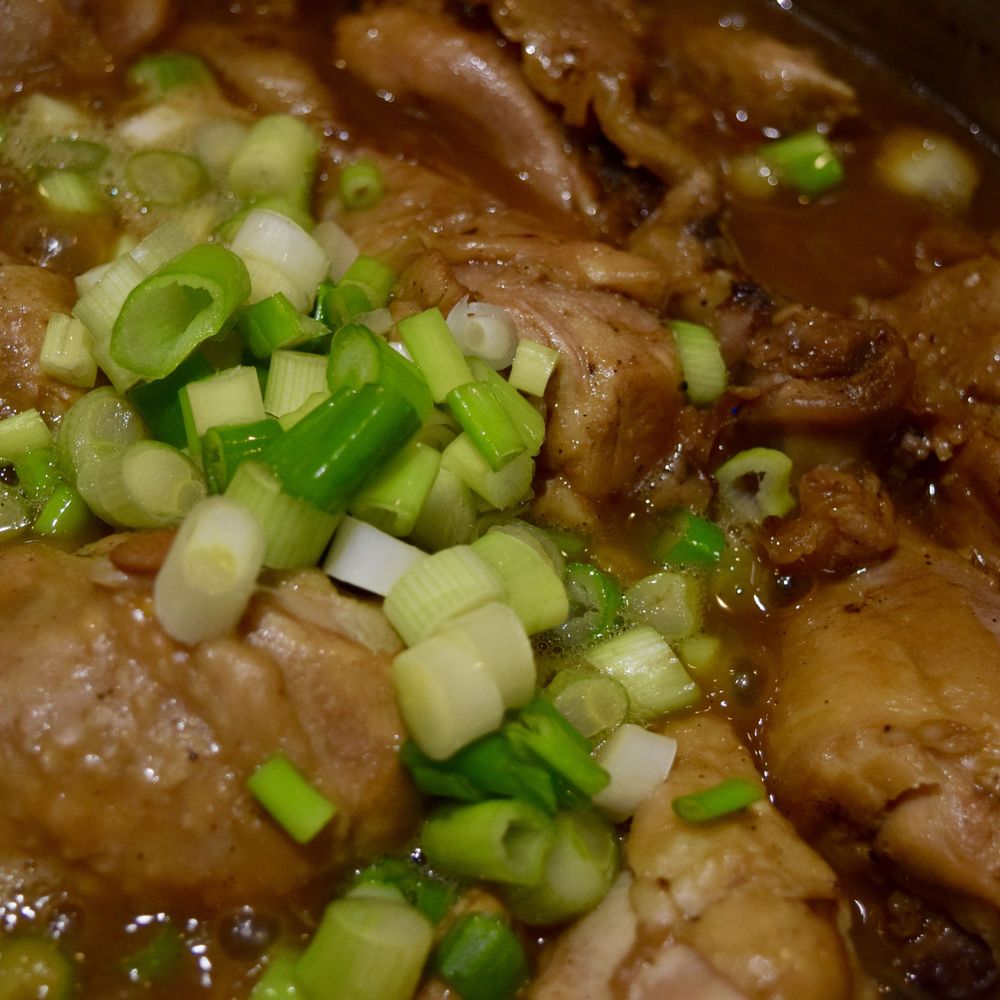Filipino chicken adobo
Chicken second courses

In my lola’s (grandmother’s) outdoor kitchen, store bought was not okay because there was no store to buy it from. Living in the Philippines countryside meant one small store for items you can’t make yourself or a kaleidoscope of makeshift stores in front of neighbors’ houses for vegetables grown in their backyards. Butter was a few towns and a ride away, slow in a jeepney through a forested hillside.
<br />
<br />Coconut milk did not come from a can. It came from hand-cramping work. With her long hair white as clouds twisted into a neat bun away from her face, my lola would hold a coconut in one hand, machete in another and split the fruit in half before making her own coconut milk. That’s the easy part. Next step on the recipe involves sitting on a “kudkuran ng niyog.” This coconut grater is a staple tool in every traditional Filipino outdoor kitchen.
<br />
<br />The kudkuran is a small bench with a metal grater attached to one side of the long end. To use it, you have to sit on the bench with the grater in front and with your legs apart as if you were riding a horse. After grating the coconut flesh into a bowl, you pour water onto it, take a handful and squeeze. Squeeze, repeat until you have coconut milk.
<br />
<br />Usually, we ate backyard-to-table, growing many of our vegetables and fruits and raising our own chickens. My lola was often the butcher and the cook. Chicken adobo for dinner meant catching a chicken from the coop in our yard. Sometimes, I watched her holding the chicken upside down, its throat slit, its blood trickling into a bowl. That was the chicken I first held as a fertilized egg, then a chick, then as adobo. I grew up knowing precisely where my food came from.
<br />
<br />Even the rice we used to soak up and savor the adobo sauce was harvested from our family farm. Sharecroppers brought them to town in sacks, the grains still in their husks and later spread out on the street in front of our house to dry out. My lola turned them with a rake every so often, working it like a Zen garden, coaxing it to dry out in the wet tropical heat. Eventually, they were bagged again and taken to the only mill in town to separate grain from husk.
<br />
<br />This chicken adobo recipe is a homage to my lola. Granted, the toughest thing I had to do was drive to the grocery store down the street to source my canned coconut milk and already butchered and packaged organic chicken, but making and eating it means happy memories for me, learning to cook with my eyes, watching her.

Comments